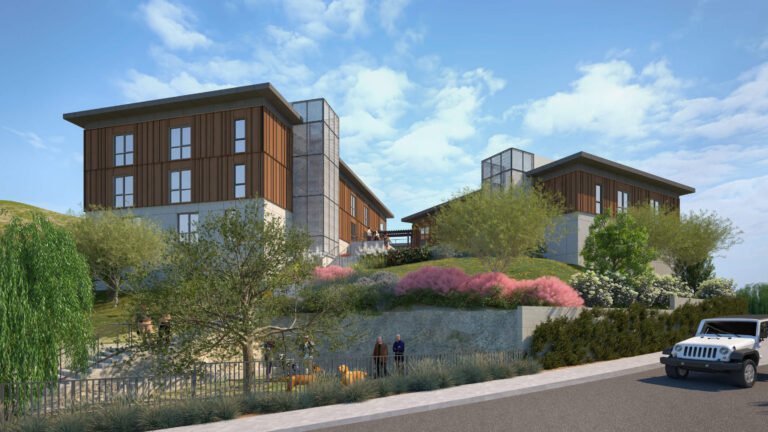Millennials and Gen Z strongly support “missing middle” housing, Zillow survey says
The results of a comprehensive new Zillow survey gauging the views of 12,000 adult residents in 26 major metro areas on the topic of neighborhood-densifying housing options show that a resounding majority of those polled support allowing forms of missing middle housing such as accessory dwelling units (ADUs) and duplexes/triplexes in their own figurative, and perhaps literal, backyards.
Support for missing middle housing in residential neighborhoods was strongest from those polled who identify as renters. Eighty-four percent of renters surveyed back “modest densification” options including ADUs or duplexes/triples, compared to 73 percent of homeowners. Support for missing middle housing was strongest among younger age groups with 86 percent of Gen Zers (ages 18–27) and Millennials (ages 28–42) backing ADUs or duplexes/triplexes. The support slackened with age but not dramatically so. A sound majority of both Gen Xers (ages 43–57) and baby boomers along with the Silent Generation (ages 58 and over) signaled their support with 78 percent and 64 percent of respondents in those two age categories, respectively, agreeing that ADUs or duplexes/triplexes should be allowed. Across all age groups and other demographics, support was slightly stronger for ADUs alone than duplexes/triplexes alone.
A total of 61 percent of respondents agreed when asked to react to the following statement: “Having more affordable housing in my community is more important than free parking for myself.” Within the youngest Gen-Z age category, 72 percent of residents agreed that affordable housing is more important than free parking while in the oldest age group, boomers and the Silent Generation, slightly less than half of respondents were in agreement. In addition to renters and younger residents, respondents of color and those identifying as being part of the LGBTQ+ community generally showed stronger support for allowing ADUs and triplexes/duplexes than white and heterosexual respondents.
As noted by Zillow, many of the 26 cities where residents were polled on the topic are experiencing affordable housing crises. Residents of the fast-growing Spokane metro area in Washington led the way in their support of allowing ADUs or duplexes/triplexes in residential neighborhoods with 86 percent, followed by Boston, Los Angeles, and San Jose where 84 percent of respondents polled in favor. Detroit residents were the least in favor of allowing ADUs or duplexes/triplexes with 70 percent of those surveyed indicating their support of mild neighborhood densification options. Atlanta and Cincinnati weren’t too far behind with 72 percent in favor. In New York City, 73 percent of respondents were in favor.
Similar to the results broken down by age, ADUs enjoyed broader support than duplexes/triplexes in each of the 26 cities included in the survey. In Atlanta, for example, only 47 percent of those polled supported allowing duplexes/triplexes while 68 percent supported ADUs. Atlanta is the only city where support for allowing duplexes/triplexes alone dipped below 50 percent, although it did come close in Jacksonville and Houston (52 and 53 percent, respectively).
As for the positive impacts that allowing duplexes/triplexes in residential neighborhoods can yield, a majority of respondents across all demographics agreed that neighborhood amenities (restaurants, parks, and the like) was the top benefit at 68 percent, followed by the availability of more affordable housing options (67 percent), access to public transportation (63 percent), a sense of community and belonging (62 percent), the “look and feel” of their neighborhood (55 percent), and the value of existing homes in their respective neighborhoods (53 percent). Nor surprisingly, only 37 percent of respondents overall said that neighborhood densification would have a positive impact on traffic and parking.
Zillow’s survey also polled residents on allowing small-to-medium apartment buildings to be built in their neighborhoods and the potential positive impacts of such development. While most respondents agreed that multi-family projects would prove beneficial by boosting the number of affordable housing options in their respective neighborhoods (68 percent), fewer overall (57 percent) indicated that they would actually support such a building being constructed. This difference was particularly stark between current homeowners (48 percent) and renters (72 percent), and between the youngest age category (72 percent) and the oldest (40 percent). As for cities, residents of both Spokane and Boston yielded both the largest gaps—20 percent in each case— between the acknowledgment of the positive impact of affordability and being copasetic with new apartment construction. In some cities like Miami (70 percent vs. 63 percent), the gap between the two was decidedly smaller.
More on the results and methodology behind the survey can be found here.



